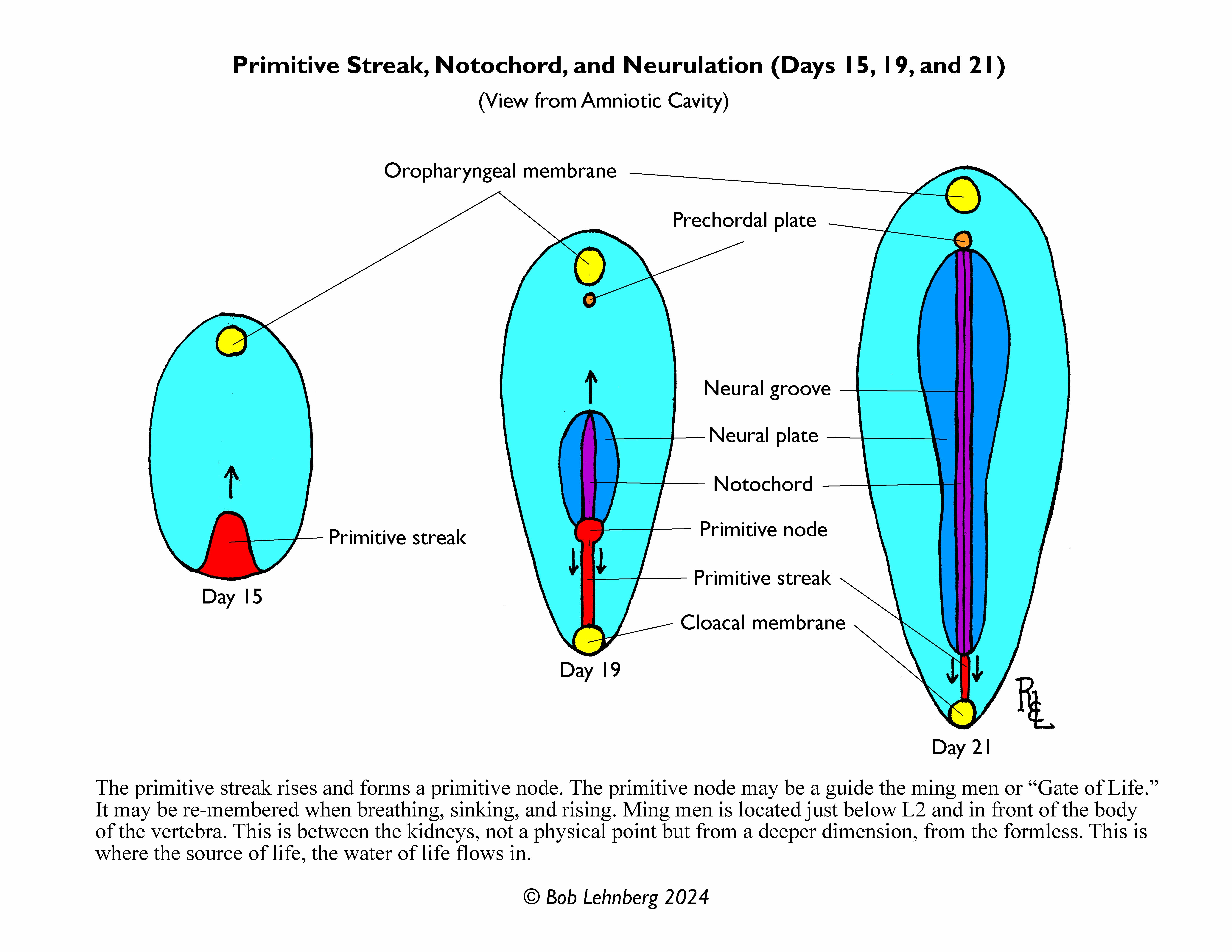
Nervous System Origins and Applications to Qi Practice
Live Online Series:
7-class series April 8th – May 13th, 2024, 10:30 a.m. – 12:00 EST
Discussion May 20th 10:30 – 11:30 a.m.
$135
Click here for more information and to enroll
Description: The nervous system develops from the ectoderm germ layer of the embryo. We create the nervous system as a means of communication for the body. This includes the brain and spinal cord, cranial nerves, peripheral nerves, the enteric nervous system, glial cells, and the epidermis. The development of this system is inherent in us. We will learn the embryological processes and apply them to qigong forms of stillness and movement practices. All forms in class are simple to learn and adaptable to individual circumstances.
Applying principles of embryology to qigong may sound complex, however, the application to qi movement practice is simple. We use the in-formation of the embryo to re-member the formative processes in the present.
Class 1: Overview. The ectoderm forms the neural tube, the neural crest, and the epidermis. All are expansive in nature. We will re-member the formation of the neural tube, spinal cord, and early brain. The relationship of these structures allows us to root and rise through our back midline.
Class 2: Brain Formation and Cranial Nerves. Folding of the early midbrain allows an ease in our central nervous system, providing an effortless alignment of our neck and head. Qigong, in our modern day, is useful for reducing the effects of stress on our nervous system. We can use simple nerve releasing movements to let go of some of the unnecessary holding in our nerve tissue.
Class 3: Enteric Nervous System. An independent system in itself, the enteric nervous system is in the gut, the small intestine, large intestine, and mesentery. In the small intestine, it is central to practices for the lower dantien including breathing and initiating movement in the lower energy field.
Class 4: Autonomic and Somatic Nervous Systems. The parasympathetic and sympathetic systems form our “ground of being” and “pathways of awareness,” respectively. We can experience them as wuji (emptiness) and flow of awareness. They underlie our outer body expression through the somatic system. We will explore this in practice as stated in the adage “mind moves qi, qi moves blood (body fluids), and blood moves body.” The converse is also possible, “body moves blood (body fluids), blood moves qi, qi moves mind.”
Class 5: Glial Cells. Glial cells form the non-conductive part of our nervous system communication network. They are essential in the flow of communication. As a group of cells, they calibrate and organize spatial information both within the body and beyond the body. We will consider two specific types of glial cell, myelin cells and astrocytes.
Class 6: Review.
Discussion: Body-mind aspects of embryology and qi practices.